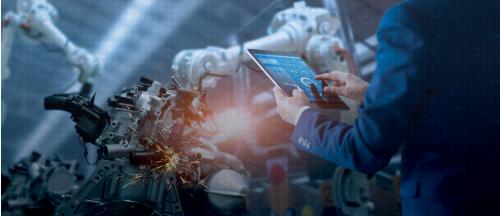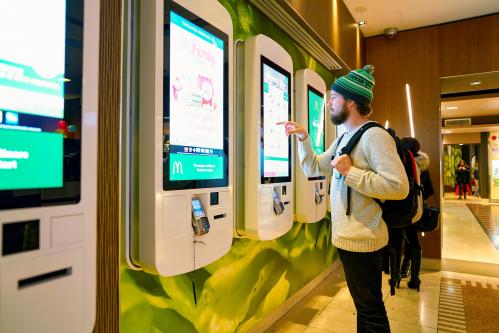During last Tuesday’s Democratic debate, moderator Erin Burnett referenced our recent automation report (albeit misrepresenting one of our key findings) as she asked candidates how the U.S. should respond to automation’s impact on the workforce. In the wake of the debate, discussions broke out on Twitter, among fact-checkers, and in policy-focused publications about the significance of automation. First the discussion focused on whether trade or automation “mattered” more, then it pivoted to the idea that concerns about automation are overblown.
Then on Thursday, economist and New York Times columnist Paul Krugman posted a column warning Democratic candidates that automation in the U.S. is nothing new. Krugman first helpfully noted that our report did not assert that one-quarter of jobs would disappear in 10 years, as Burnett asserted at the debate (rather, our report says that one-quarter of jobs will face high exposure to automation—but not all those workers will ultimately be displaced). Then he went on to observe that there is nothing particularly exceptional about automation at this point in history. He pointed out that the late 1940s—a significant period of automation-based transition for the U.S. economy—was in fact a golden age for American workers.
While these discussions are important, in some ways they miss the mark. Automation isn’t a problem because it’s a new thing, or because the pace of technological change may be getting faster. Instead, automation is a problem because our policy infrastructure is no longer equipped to handle significant, economy-wide workforce transitions that result from these displacements.
This wasn’t always the case. For example, the late-1940s “golden age” that Krugman cites didn’t happen in a vacuum. Rather, the G.I. Bill (formally named the “Servicemen’s Readjustment Act”) helped Americans returning from World War II develop new skills that could be utilized in the civilian world. It was one of the most robust adjustment policies that the U.S. has ever enacted (albeit one that was beset by massive racial discrimination problems). These investments were coupled with other existing economic and policy dynamics which made the economy better able to manage transitions: a greater share of manufacturing jobs (which didn’t cluster as readily in large cities), higher unionization rates, and less employer concentration.
Automation isn’t a problem because it’s a new thing, or because the pace of technological change may be getting faster. Instead, automation is a problem because our policy infrastructure is no longer equipped to handle significant, economy-wide workforce transitions that result from these displacements.
Today, however, our investments are going in the opposite direction. Our spending on active labor market policies (i.e. retraining and job matching) are at an all-time low relative to the size of the economy. Worker voice and bargaining rights have been eroded. And the spatial nature of the knowledge economy means that jobs are naturally biased toward big, coastal, “superstar” cities. These changes make the effects of automation-based displacement more severe. We need investments that acknowledge these critical realities, helping workers prepare for a broader skills mix, and creating jobs for those workers to fill.
Which is why we, and many others, are looking seriously at the policies needed both to help workers manage adjustments as well as to create new job opportunities for them. Notably, very little of this revolves around the various “universal basic income” narratives now circulating. More grounded proposals include policies such as creating Universal Basic Adjustment benefit to help displaced workers, or a federal effort to create significant investments in communities left behind by the modern economy. Others are doing crucial work to explore how to better support worker bargaining power, enable talent-driven economic development, and actually create jobs in places with weak labor markets.
All of this is to say that automation is a significant—but by no means the only—source of economic stress in the U.S. It epitomizes a wide range of slow-moving disruptions, such as those associated with globalization, new workforce management methods, and the gig economy—all of which are creating an acute need for rethinking how we help workers adjust to new conditions. In that sense, all of the various economic and policy upheavals affecting the country deserve careful assessment and thoughtful policy responses.
But that doesn’t mean “automation” is a meaningless buzzword. Workers have been and will continue to be displaced by it. Which is why 60% of Americans in both parties are anxious about its effects.
So while scrutinizing the exact number of displaced workers, or the exact timeline of their displacement, is probably impossible, that’s not the important point in thinking about automation. Rather, the takeaway should be that we as a nation need to begin to truly grapple with the many economic and policy upheavals that have gotten us to our current position, and get back to proposing bold solutions for fixing our most pressing economic obstacles.
The Brookings Institution is committed to quality, independence, and impact.
We are supported by a diverse array of funders. In line with our values and policies, each Brookings publication represents the sole views of its author(s).








Commentary
Automation isn’t the only trend affecting workers, but that’s no reason to ignore the threat
October 21, 2019